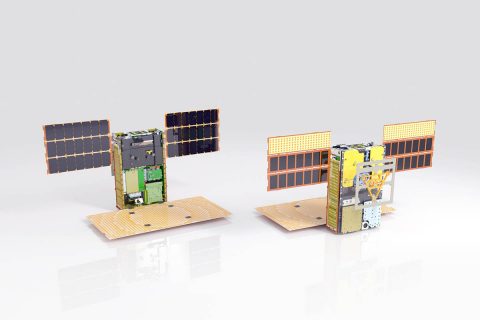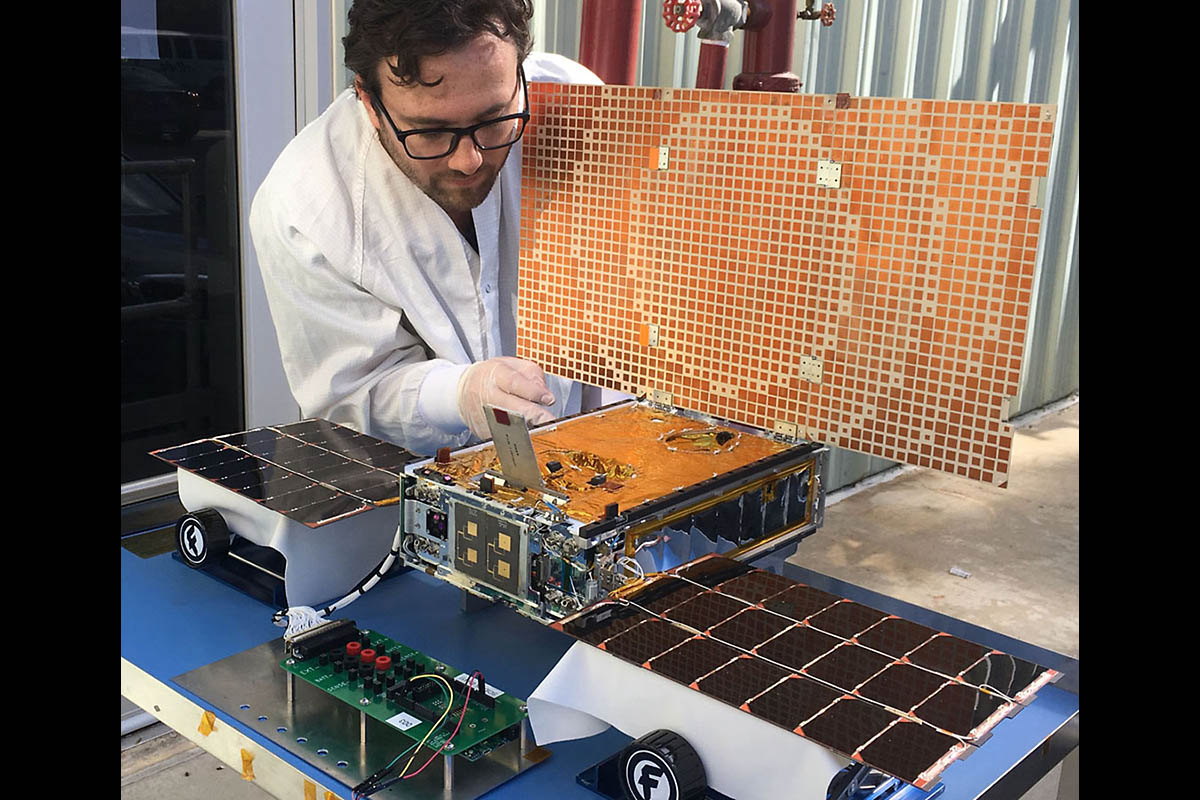NASA’s Jet Propulsion Laboratory
 Pasadena, CA – Twenty years ago, CubeSats — a class of boxy satellites small enough to fit in a backpack — were used by universities as a teaching aid. Simpler, smaller and cheaper than traditional satellites, they’ve made space more accessible to private companies and science agencies.
Pasadena, CA – Twenty years ago, CubeSats — a class of boxy satellites small enough to fit in a backpack — were used by universities as a teaching aid. Simpler, smaller and cheaper than traditional satellites, they’ve made space more accessible to private companies and science agencies.
This summer, NASA has been flying the first two next-generation CubeSats to deep space. They’re currently on their way to Mars, trailing thousands of miles behind the InSight spacecraft. InSight and its CubeSat tag-alongs are already more than halfway to the Red Planet.

The mini-mission, called Mars Cube One (MarCO), has already proved this class of spacecraft can survive the deep-space environment.
It will next test the use of miniaturized communication technology to relay data when InSight attempts to land in November. Relaying landing data is one of the jobs of NASA’s orbiters, which will record InSight’s descent; engineers learn more from every landing attempt. MarCO will test whether this technology can ably perform the relay job for future missions.
To complete their mission, the MarCOs have miniature high-gain antennas and radios that can communicate with Earth from roughly 93 million miles away. Their propulsion systems are capable of steering towards Mars; each MarCO completed its second steering maneuver in August. They even have color cameras, one of which snapped the first image from a CubeSat of the Earth and the Moon — proof of just how far this technology has literally come.

MarCO is still experimental. It’s meant to demonstrate that spacecraft technology can be shrunk into a tiny package and still do something useful in deep space. And while CubeSats will never compete with the larger and more complex spacecraft NASA usually flies, the MarCO spacecraft are pioneering a new class of robotic exploration.
“Our hope is that MarCO could help democratize deep space,” said Jakob Van Zyl, director of the Solar System Exploration Directorate at NASA’s Jet Propulsion Laboratory in Pasadena, California. “The technology is cheap enough that you could envision countries entering space that weren’t players in the past. Even universities could do this.”
A Legacy of Pathfinders
JPL initiated and built MarCO, just one of several CubeSat projects the Lab has developed. JPL is a natural place to host CubeSats: The Lab built the first U.S. satellite, Explorer 1, which discovered the Van Allen radiation belts in 1958. Not unlike a CubeSat, it was a small, rudimentary spacecraft. The history of the U.S. space program followed in its wake.
Innovation often begins with pathfinder technology, Van Zyl said. Once engineers prove something can be done, science missions follow.
“When it comes to innovation, MarCO is in the same class as Explorer 1 and Sojourner,” Van Zyl said. “The question is: Can we use CubeSats to do more science? Not all science, because they’re too limited to carry many instruments. But this technology creates a vehicle for people to do science at a much lower investment to the taxpayer.”
NASA has already committed to answering the question. Thomas Zurbuchen, associate administrator of the agency’s Science Mission Directorate, is a proponent of CubeSats; last month, he announced NASA will be funding $100 million worth of SmallSat science missions each year.
Preparing for Future CubeSats
MarCO has already laid the groundwork for future exploration with small spacecraft.
“Almost all the features of MarCO are being adapted for use on future spacecraft,” said John Baker, the program manager responsible for small spacecraft at JPL. “And many parts started with a commercial partner’s product that was modified.”
The role of MarCO’s commercial partners can’t be overstated. Its solar panels, cameras, avionics, propulsion systems and attitude-control systems were all provided by commercial contractors. One advantage of CubeSats is they can use standardized parts and systems, allowing private companies to lower the price of new technology. Lower-cost spacecraft also mean engineers can take more design risks, testing that technology in space.
Van Zyl said that MarCO’s main goal was to prove CubeSats can survive the harsh journey to deep space. MarCO’s team can check that box off their list.
They’re already focused on their next goal: Mars is just a few months and 68 million miles (110 million kilometers) away.
For more information about MarCO, visit:



